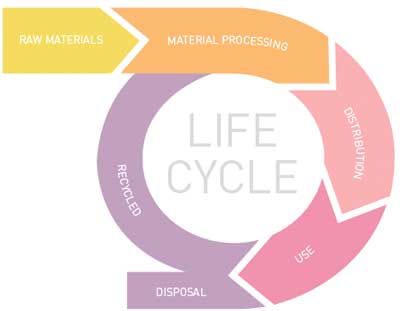 Over 100 scientists from 25 research institutions and industries in 12 different European Countries have completed one of the first attempts to understand the risks nanomaterials carry throughout their life-cycle, starting from their fabrication and ending in being discarded or recycled.
Over 100 scientists from 25 research institutions and industries in 12 different European Countries have completed one of the first attempts to understand the risks nanomaterials carry throughout their life-cycle, starting from their fabrication and ending in being discarded or recycled.
Feb 26th, 2018
Read more
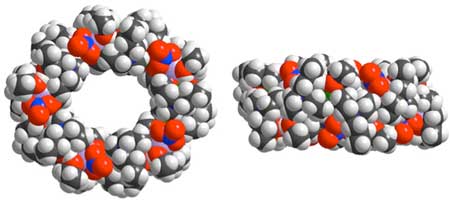 International research project on the border between physics and chemistry.
International research project on the border between physics and chemistry.
Feb 26th, 2018
Read more
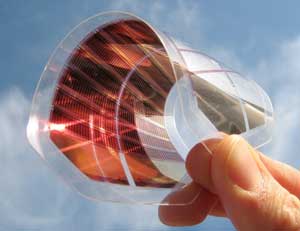 New research reveals how to make highly-efficient solar cells, more stable than previous devices made with related materials.
New research reveals how to make highly-efficient solar cells, more stable than previous devices made with related materials.
Feb 26th, 2018
Read more
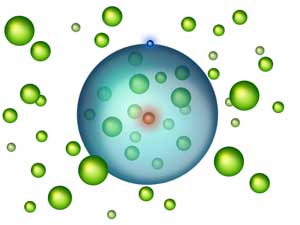 Scientists have provided proof for a new state of matter: an electron orbits a nucleus at a great distance, while many other atoms are bound inside the orbit.
Scientists have provided proof for a new state of matter: an electron orbits a nucleus at a great distance, while many other atoms are bound inside the orbit.
Feb 26th, 2018
Read more
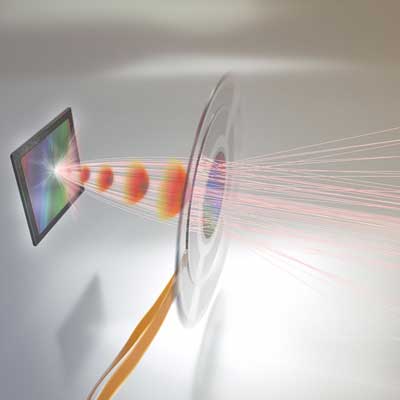 Artificial eye automatically stretches to simultaneously focus and correct astigmatism and image shift.
Artificial eye automatically stretches to simultaneously focus and correct astigmatism and image shift.
Feb 23rd, 2018
Read more
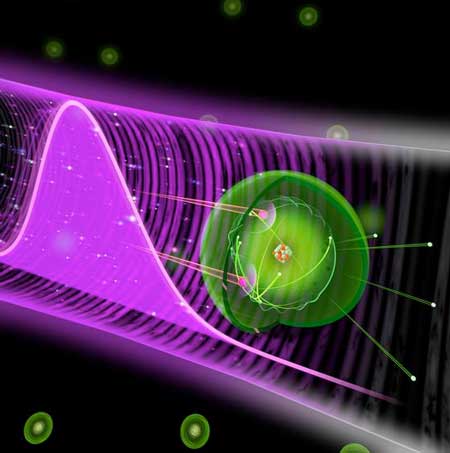 A newly developed laser technology has made it possible to observe the interaction of multiple photons in a single such pulse with electrons in the inner orbital shell of an atom.
A newly developed laser technology has made it possible to observe the interaction of multiple photons in a single such pulse with electrons in the inner orbital shell of an atom.
Feb 23rd, 2018
Read more
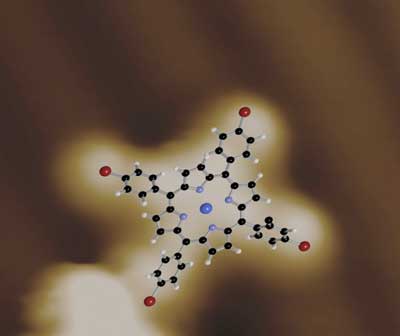 A surprising discovery about spin-electron interactions in a specialized semiconductor material - a 'sandwich' of layers with different properties, buffered by a graphene nanoribbon - could potentially offer major advantages in speed, heat dissipation and power consumption in electronic devices.
A surprising discovery about spin-electron interactions in a specialized semiconductor material - a 'sandwich' of layers with different properties, buffered by a graphene nanoribbon - could potentially offer major advantages in speed, heat dissipation and power consumption in electronic devices.
Feb 23rd, 2018
Read more
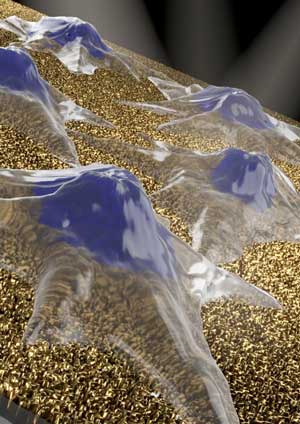 Scientists have developed new innovative biosensing material for counting dividing cells and detecting biomolecules.
Scientists have developed new innovative biosensing material for counting dividing cells and detecting biomolecules.
Feb 23rd, 2018
Read more
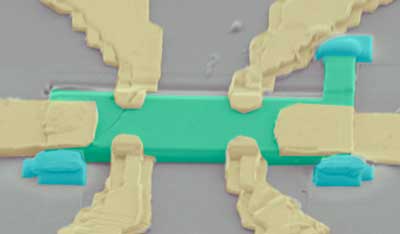 Materials with left- and right-handed responses to current exhibit an intriguing diode effect.
Materials with left- and right-handed responses to current exhibit an intriguing diode effect.
Feb 23rd, 2018
Read more
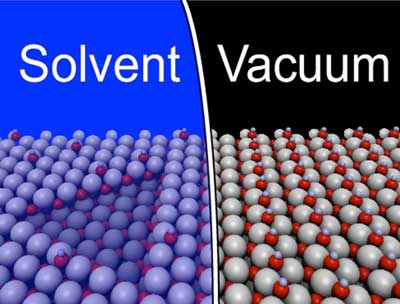 Scientists show how geometric structures at surfaces can be formed with atomic precision by water.
Scientists show how geometric structures at surfaces can be formed with atomic precision by water.
Feb 23rd, 2018
Read more
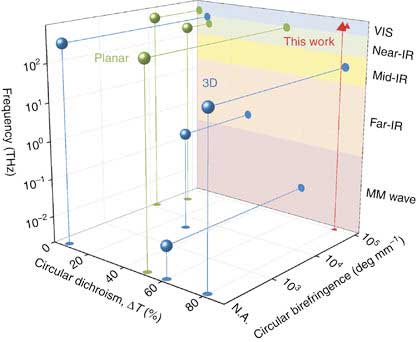 Researchers have developed a metasurface, comprised of a single planar layer of nanostructures, which exhibits strong optical chirality in transmission.
Researchers have developed a metasurface, comprised of a single planar layer of nanostructures, which exhibits strong optical chirality in transmission.
Feb 23rd, 2018
Read more
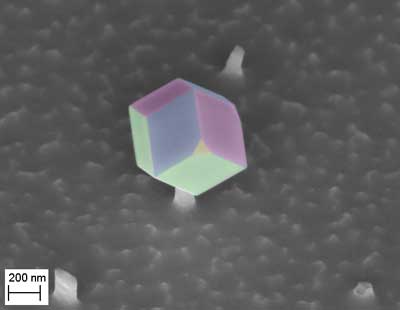 Scientists have succeeded in growing nanocrystals of gallium arsenide on tiny columns of silicon and germanium. This enables extremely efficient optoelectronic components for important frequency ranges to be realised on silicon chips.
Scientists have succeeded in growing nanocrystals of gallium arsenide on tiny columns of silicon and germanium. This enables extremely efficient optoelectronic components for important frequency ranges to be realised on silicon chips.
Feb 23rd, 2018
Read more
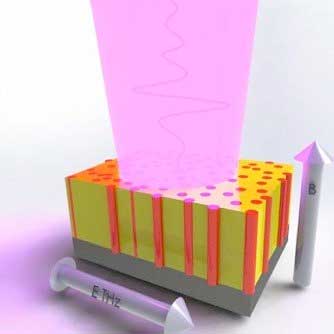 Colossal magnetoresistance at terahertz frequencies in thin composites boosts novel memory devices operated at extremely high speed.
Colossal magnetoresistance at terahertz frequencies in thin composites boosts novel memory devices operated at extremely high speed.
Feb 22nd, 2018
Read more
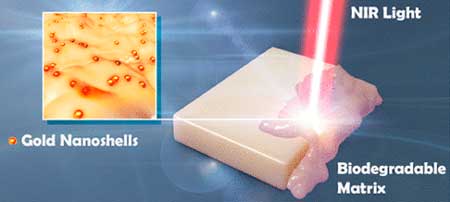 The new method uses a unique polymer coating that contains nanoscale gold particles, in addition to the drug itself. The drug only releases when a light shines on the gold particles, causing the polymeric coating to melt.
The new method uses a unique polymer coating that contains nanoscale gold particles, in addition to the drug itself. The drug only releases when a light shines on the gold particles, causing the polymeric coating to melt.
Feb 22nd, 2018
Read more
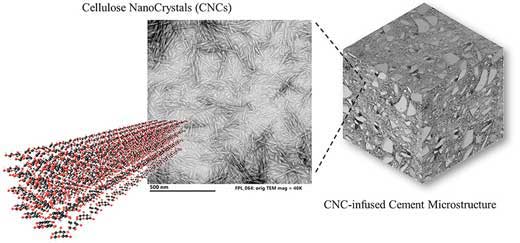 Researchers studying whether concrete is made stronger by infusing it with nanocrystals from wood are moving from the laboratory to the real world with a bridge that will be built in California this spring.
Researchers studying whether concrete is made stronger by infusing it with nanocrystals from wood are moving from the laboratory to the real world with a bridge that will be built in California this spring.
Feb 22nd, 2018
Read more
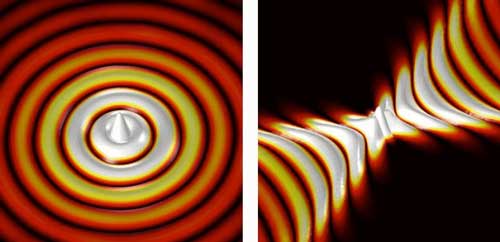 A new metasurface for infrared light is based on boron nitride, a graphene-like 2D material, and was selected because of its capability to manipulate infrared light on extremely small length scales, which could be applied for the development of miniaturized chemical sensors or for heat management in nanoscale optoelectronic devices.
A new metasurface for infrared light is based on boron nitride, a graphene-like 2D material, and was selected because of its capability to manipulate infrared light on extremely small length scales, which could be applied for the development of miniaturized chemical sensors or for heat management in nanoscale optoelectronic devices.
Feb 22nd, 2018
Read more
 Over 100 scientists from 25 research institutions and industries in 12 different European Countries have completed one of the first attempts to understand the risks nanomaterials carry throughout their life-cycle, starting from their fabrication and ending in being discarded or recycled.
Over 100 scientists from 25 research institutions and industries in 12 different European Countries have completed one of the first attempts to understand the risks nanomaterials carry throughout their life-cycle, starting from their fabrication and ending in being discarded or recycled.















 Subscribe to our Nanotechnology News feed
Subscribe to our Nanotechnology News feed